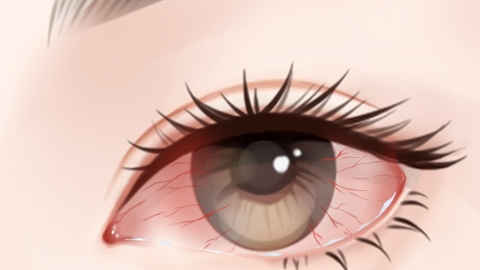What are the symptoms of allergic conjunctivitis?
Generally, the main symptoms of allergic conjunctivitis include itchy eyes, conjunctival congestion, increased eye secretions, eyelid swelling, photophobia, and tearing. If discomfort symptoms occur, it is recommended to seek timely treatment at a regular hospital. Detailed analysis is as follows:
1. Itchy Eyes
Allergens such as pollen and dust mites can trigger immune system reactions upon contact with the eyes, releasing inflammatory mediators like histamine that stimulate ocular surface nerve endings, causing itchiness. Patients often feel compelled to rub their eyes, and the itching significantly worsens after exposure to allergens, sometimes being more pronounced at night or upon waking.

2. Conjunctival Congestion
Inflammatory mediators cause conjunctival blood vessels to dilate and increase vascular permeability, leading to conjunctival redness. Visibly, the white part of the eye appears red, either uniformly or in patches, and in severe cases, the redness may extend across the entire sclera. Patients may experience a sensation of heat in the eyes.
3. Increased Eye Secretions
Inflammation irritates the conjunctiva, causing abnormal mucous membrane secretion function and increased secretions. These secretions are typically white or transparent and mucus-like, with a thin consistency. Upon waking, they may stick the eyelids together, making it difficult to open the eyes. This differs significantly from the purulent discharge seen in bacterial conjunctivitis.
4. Eyelid Swelling
Inflammation spreading to the eyelid tissues causes eyelid subcutaneous tissue congestion and edema, resulting in eyelid swelling. The eyelids appear swollen and thickened. In severe cases, patients may experience difficulty closing their eyelids, and pressing on the eyelids may cause mild tenderness, affecting eye appearance and normal vision.
5. Photophobia and Tearing
Inflammation increases ocular surface sensitivity and reduces tolerance to light, leading to photophobia. Simultaneously, inflammatory stimulation increases tear production, causing tearing. Patients may instinctively squint in bright light environments and may need to wear sunglasses when outdoors. Tearing typically manifests as involuntary minor overflow rather than excessive lacrimation.
In daily life, it is important to identify and avoid allergens, such as limiting outdoor activities during spring and autumn to avoid pollen exposure and regularly cleaning bedding to prevent dust mite proliferation. Avoid rubbing the eyes to prevent exacerbating ocular surface damage or triggering infections.







